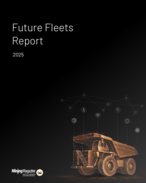Published in the March 2009 Coal USA Magazine
The university’s program coordinators hosted “Escape and Survive – A Miner’s Town Hall Meeting” in Greensburg, near Pittsburgh, on June 18, 2008 – a gathering made possible by the federally administered Brookwood-Sago Safety Grant.
To share its suggestions, Penn State University distributed “Do You Understand Mine Emergencies? Are You Prepared for a Mine Emergency?” in early 2009 via its web site.
The six-module program, which is also available on CD from the US Mine Safety and Health Administration, contains a presentation, a guide for session participants and an instructor’s guide.
The topics include mine emergencies, emergency response plans, self-contained self-rescuers, emergency communications and miner tracking, escape and evacuation, and breathable air-safe havens and refuge chambers.
Also included in the training packet are supplemental materials including information on the Mine Improvement and New Emergency Response Act of 2006 – the MINER Act a sample ERP, an overview of duties to be taken on by the responsible person in an emergency, an SCSR checklist and refuge-shelter specifications as well as a review and description of current technologies that are MSHA-approved.
“For 115 years, Penn State University has been a pioneer in the training and professional development of mining engineers, mine inspectors and mine management personnel through degree programs, mandatory training, skills training, and seminars/conferences,” the PSMT coordinators said of the program, which is meant to improve survival capabilities through mine emergency preparedness (MEP).
“The Penn State Miner Training program is considered one of the country’s leading resources for high-quality classroom and site-specific instruction for coal and industrial mineral extraction operations.”
The basics explained
One advantage of the training program is its comprehensiveness – mine safety and training supervisors and even workers themselves can keep all information at hand so it’s readily accessible at any time.
For example, as the group of experts pointed out, new regulations have changed the face of emergency response, and no one will disagree that the best preparation for an emergency situation is knowledge. The most notable changes have been to breathing apparatuses, communications and gas detection, one expert stressed.
As part of the supplementary documents, the PSMT compiled an overview of the duties a responsible person must take on in the event of an emergency – events which the panel said often are classified under the main headings of explosion, inundation (by gas or water) or fire.
Quick action is vital to saving lives, beginning with the initiation of a mine evacuation. Once the evacuation has begun, contacting emergency personnel (including MSHA’s toll-free One Call Does it All Line at 1-800-746-1553) and organizing a command center are next to be completed by the responsible party.
After appropriate information on the emergency has been communicated, the logistics of rescue shifts into top gear, including the coordination of firefighting personnel, deployment of the crew’s equipment, the coordination and deployment of mine rescue teams, and the establishment of a fresh air base. The person or persons managing the effort should also provide for mine gas to be sampled and analyzed.
If the emergency is within the mine, communication with others is also key. The party that has taken responsibility in the effort should immediately establish contact with crews in the affected area as well as those inby who may be in harm’s way, personnel in outby areas if conditions warrant (such as a full-mine evacuation), and surface staff so that those off-site can be notified.
Even when there is not an emergency occurring at a mine, the PSMT coordinators stressed the importance of reviewing and re-reviewing the modules and associated supplements, as even the most prepared individual will tend to react to the stress of an incident.
A CD of the town hall meeting and a copy of the training program “Do You Understand Mine Emergencies? Are You Prepared for a Mine Emergency?” can be requested from MSHA.
























